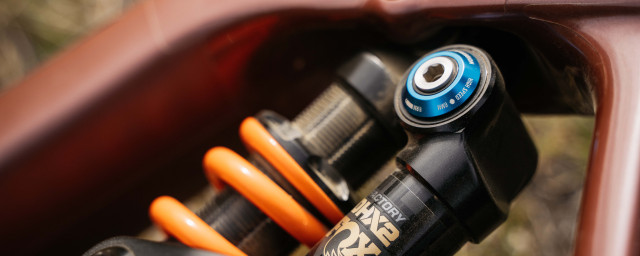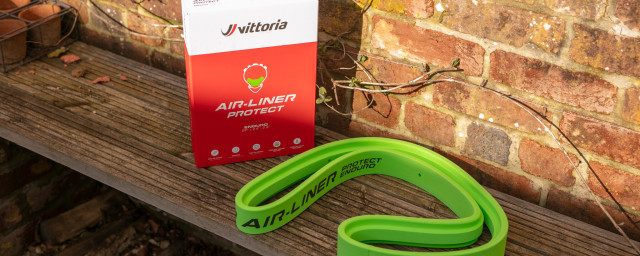The Spex4Less SPT13 Sports Glasses can be made to a bifocal prescription, matched exactly to your pupil distance. With options for hydrophobic and anti-glare coatings and built into a very sturdy and good-looking frame, they are a solid option for riders needing to see close-up and far-off in one frame. The lenses could be larger to afford more protection from mud and wind but overall for the money, they’re a great way to see where you’re going and what you’re doing.
Noting the price shown is for the options selected as described below.
Family-owned UK business Spex4Less has been around for two decades now, based outside of Liverpool. It's online reviews are very flattering of the service, and there’s a seven-day full refund guarantee if you don’t get on with your new prescription glasses.
My review here is focused on the bifocal features of these glasses. Being on the right side of fifty (ie trending towards wisdom, disposable income/time and with fewer children underfoot) means my close-up eyesight isn’t what it was. I’m not sure when it happened exactly, but one day I realised I’d started peering beneath my glasses whilst holding things like phones at arm’s length to read them. And critically for cycling, I was struggling to make out information on the Garmin.
A dig around the online world of sports glasses led to Spex4Less as a reputable brand with a good offering, so we called in a pair made to my prescription for review. I went for the SPT13 as the best combination of looks vs performance.
To get the bifocal lenses 100% correct for your face Spex4Less asks you to submit a photograph from a distance away (ie not a selfie, you need someone else to do this) while you hold a ruler level above your eyes so they can accurately assess your pupil distance. Other brands that don’t require your pupil distance will assume a standard width, with a less-optimal resultant performance. You get what you pay for.
Spex4less SPT13 Sports Glasses - Technical details
I went for clear lenses, best for low light and night riding. As I spend a lot of time in and out of trees, bright sunlight isn’t generally that much of an issue. If you need actual sunglasses then there are two options for a brown or a grey tint for an extra £10. You get lightweight Polycarbonate ‘scratch-resistant’ lenses by default – I went for the other optional coatings: Hydrophobic and Anti-Reflective.
The Hydrophobic coating (£30) ‘repels water and resists smudges, keeping lenses clear and easy to clean.’ Spex4Less describe the coating thus: ‘Our hydrophobic coating employs advanced nanotechnology to repel water, ensuring your lenses remain clear in challenging conditions. Water droplets bead up and effortlessly roll off, preventing smears or streaks. Moreover, this coating simplifies lens cleaning, resisting smudges, dirt, and fingerprints. Experience an unobstructed view and minimal maintenance with our hydrophobic solution’.
Again, I had plenty of opportunity to test how well the hydrophobic coating worked – and the answer is really well, so long as the lenses are clean. Any dust or grease on the surface pretty much nullifies the effect, but when clean water beads off almost instantly.
The Multi-Anti-Reflective coating (£15) ‘cuts glare, enhances clarity and visibility of eyes, and is used on the inner side of sunglasses.’ Spex4Less say ‘The coating, which is also known as AR and anti-glare, has some benefits for the user – such as reducing glare when working in front of a computer and when driving at night. It also makes your lenses look better - by eliminating reflections. When applied to a clear lens, this coating also makes your glasses lenses look nearly invisible so people can see your eyes and facial expressions more clearly, helping you to look your best in all lighting conditions (look at glasses-wearers on TV and how you can see their eyes)’.
I’m used to wearing glasses for computer work and driving with an anti-reflective aka anti-glare coating, and the SPT13 coating works every bit as well as that applied to a pair of Ray-Bans from a high-street optician costing four times the price. The benefit of cycling is most noticeable in the dark when any reflection from your glasses or the ‘halo’ effect from an oncoming light can reduce your perception or strain your eyes.
So having thrown the kitchen sink at the website and ordered every possible option bar tint, then emailed in my prescription and the pupil distance photo, it took just over a week for the glasses to arrive.
In the box, you get the glasses, a zipped hard case with a fluffy interior, a lens cleaning kit consisting of an anti-fog/anti-static solution, a cleaning cloth, and a wee hinge screwdriver tool. You also get two lengths of elastic retaining straps that snap and lock into the ends of the arms. These are for if you are paranoid about the glasses falling off, or if you need to be able to remove them from your face without dropping them, for cleaning or other reasons. Or if you’re putting the glasses to other sporting uses, eg a ball or contact sport, or maybe something faster like waterskiing.
Spex4less SPT13 Sports Glasses - Peformance
The frame of the SPT13 is definitely on the chunky side, with pretty thick arms at the front that tapers back. The sit on my face left a reasonably large gap under the glasses, and initially, I was concerned that this would let in a lot more mud than I was used to with a fuller-face design. I didn’t experience eyeball splatter but more windflow than normal was evident. Of course in misty/cold/humid conditions when you’re working hard more airflow is A Good Thing – so it’s a tradeoff. Between the Hydrophobic coating, the cleaning solution and the airflow, I can’t recall a ride the whole winter where I needed to stop and wipe the lenses down, either in pouring rain, fog or on sub-zero hard climbs.
Which brings us to the main show – the bifocals. Because these aren’t the far more expensive varifocal type (where the lenses segue imperceptibly from distance to close-up) there’s a definite line in the lower third of your vision between the two prescriptions. Off the bike, this feels weird but on the bike, the line mentally disappears as you are either focused on not getting hit by cars / going off the edge of the trail, or reading your computer or phone. Having one pair of glasses on your face able to do both jobs is a revelation for those battling degenerating eyesight.
I rode the SPT13s during mountain biking, gravel and road riding and found them suitable for all tasks. You might want for more peripheral vision on the road, but despite the thick sides, I didn’t feel I was endangering myself.
Wearing them under and over combinations of beanies, helmet straps and over-ear headphones the arms stayed put and didn’t feel pressured, even after three or four hours of riding. The combination of the arm inserts and nose bridge grip meant they stayed put even down the rowdiest MTB trails or fast gravel descents.
Looking at alternatives, an optional brand is BZ Optics. (The £90 bifocal offer is only available in a set pupil width, and a set three options of +1.5, +2 or +2.5. There’s no option for hydrophobic, anti-scratch or anti-reflective coatings.
Sportsglasses.online offers a prescription bifocal made to your needs for £160 but without the coatings offered by Spex4Less.
You can go with ophthalmic inserts for the larger traditional cycling frames. Having used these before I found them a real pain to keep clean and dry. They weigh more, and it’s another small transparent thing to lose or drop. You’re likely paying a similar price to the entire Spex4Less price, too.
Spex4less SPT13 Sports Glasses - Verdict
I rate the Spex4Less SPT13 Sports Glasses. They perform well in all weather, feel comfortable and, at under £130 with a money-back guarantee, are very wallet-friendly. While not your standard type frame they don’t overtly scream CYCLIST in the way many other half-frame 80’s-Oakley-esque wraparounds do. If you’re happy with the look and fit, technically they won’t disappoint.















Add comment